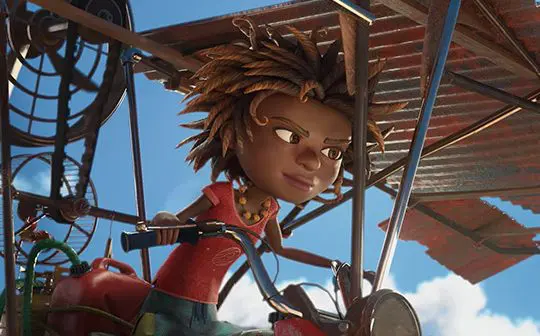
Meet Jarli, a First Nations girl who dreams of reaching the stars.
During National Science Week, see how STEM ambassador Jarli hitched a ride to the International Space Station on the NASA SpaceX Falcon 9 CRS-24 mission.
Jarli’s journey to the International Space Station, documented in a six-minute short film launched today, involves a global village of scientists and engineers dedicated to inspiring the next generation of STEM talent. Beginning in the Aussie outback, the story ends with a ‘first-of-its-kind’ Australian neuromorphic sensor transmitting data from space.
Space STEM character Jarli, from an award winning animated short film, was developed by the University of Technology Sydney Animal Logic Academy for the Royal Australian Air Force (RAAF). In a bid to get Jarli to space in reality, she was laser-cut onto the space-based sensor casing for Project Falcon Neuro – a joint initiative between the Western Sydney University and US Air Force Academy.
The short film follows Jarli’s journey starting in Australia with Associate Professor Gregory Cohen, lead researcher on Project Falcon Neuro, and tracks the stringent testing through US Space Force in Houston and NASA – culminating with a robotic arm attaching the sensor to the International Space Station.
Chief Defence Scientist, Professor Tanya Monro AC said Jarli struck a chord with all of us because of her resilience, creativity and ingenuity – the qualities the next generation of Australians need to harness to achieve extraordinary things.
“It is so inspiring for Australian children, particularly First Nations children, to see clever Australian inventions driving collaboration with the US Space Force and NASA.
“For us to achieve our ambitions, the development of an Australian workforce with the necessary STEM skills is critical,” said Professor Monro.
Jarli was created in response to Australia’s burgeoning space industry.
Air Vice-Marshal Cath Roberts, Defence Space Commander said Defence had committed over $7 billion to develop sovereign space capabilities over the next decade.
“The size of Australia’s civil space sector is set to triple by 2030, with projections of more than 20,000 jobs being created.
“Today’s Australian primary school children will be starting jobs or higher-level education by 2030, and we need to ignite their passion for space. Jarli shows children how their STEM studies, combined with boldness and a can-do attitude, will open up many opportunities for their future,” said AVM Roberts.
Only 16 per cent of STEM graduates are women, and just one in 200 First Nations people have a STEM degree, compared to one in 20 non-Indigenous people. The biases which affect these numbers start young, with attitudes towards STEM being developed during early primary school.
The film is narrated by Kirsten Banks, a proud Wiradjuri astrophysicist.
“When I look at the stars, I realise it’s the same stars my ancestors have seen for thousands of years. Jarli shows our children just how far they can go through STEM – they really can reach the stars.”
With the bulk of Australian space infrastructure located in remote areas on First Nations and there are great opportunities for Australia’s space future workforce in remote areas and beyond.





